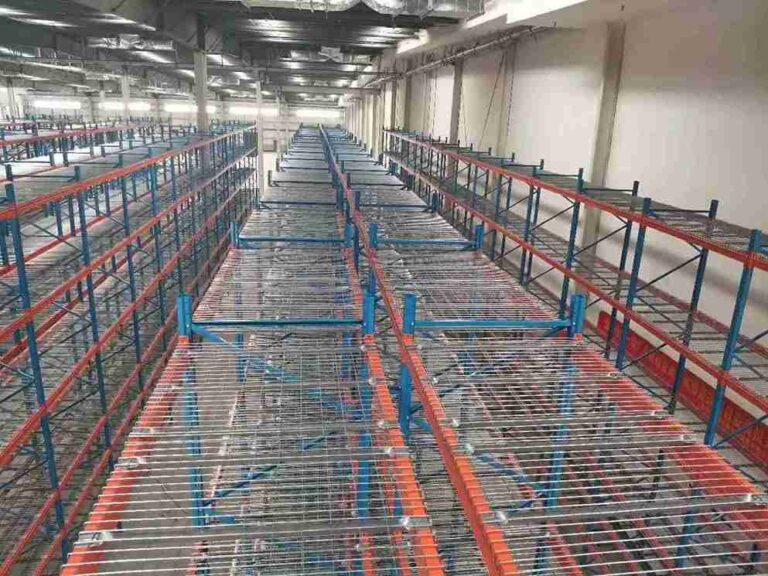📐 "First 50 Enterprise Queries Get Custom 3D Warehouse Design" Plan

Warehouse Revolution: Fusing Box Beam Racking with AGV Automation for Unmatched Productivity
In the relentless pursuit of logistical perfection, a silent revolution is reshaping distribution centers worldwide. The era of viewing storage systems and material handling as separate entities is over. The future, already being implemented by industry leaders, lies in a deeply integrated, symbiotic relationship between the physical infrastructure and the intelligent robots that operate within it. At the heart of this transformation is the strategic fusion of Box Beam Racking and Automated Guided Vehicles (AGVs).
This partnership is not merely an equipment upgrade; it represents a fundamental re-engineering of warehouse operations, designed to deliver quantifiable, dramatic gains in productivity, accuracy, and space utilization. This comprehensive exploration delves into the engineering principles, the strategic implementation process, and the undeniable return on investment that makes Box Beam Racking the indispensable foundation for any serious automation endeavor.

The Synergistic Powerhouse: Why Box Beam Racking and AGVs are Inseparable
Traditional warehouses operate on a model of conflict. Static storage, often in the form of outdated racking, battles against the dynamic flow of materials handled by forklifts and manual labor. This disconnect is the root cause of inefficiency, wasted space, and high operational costs. The integration of Box Beam Racking with AGVs resolves this conflict by creating a unified, responsive ecosystem.
The inherent design of Box Beam Racking, characterized by its separate upright frames and closed-section beams, provides the necessary flexibility and precision that automation demands. Unlike structural racking, a system built on Box Beam Racking is inherently adaptable. Meanwhile, modern AGVs bring a level of consistent, data-driven execution that human operators cannot match. When these two systems are engineered to work in concert, the warehouse transforms.
The Box Beam Racking structure is no longer a passive storage unit; it becomes an active, optimized grid designed for machine interaction. The AGVs are no longer just transport vehicles; they become the precise, tireless executors of a digital plan mapped directly onto the physical Box Beam Racking layout. This synergy is the key to unlocking unprecedented levels of performance.
Box Beam Racking Deconstructed: The Cornerstone of Automated Storage
To fully appreciate why Box Beam Racking is the non-negotiable core of a modern automated warehouse, one must understand its superior engineering and design philosophy. This system is specifically crafted to meet the rigorous demands of high-throughput, high-density storage environments.
Unmatched Structural Integrity for a Demanding Automated Environment
The very name—Box Beam Racking—reveals its core strength. The beams are fabricated from high-tensile steel, formed into a robust, closed-box section. This design is critical in an automated context. It provides exceptional resistance to torsional and bending forces, which are routinely exerted during the high-frequency interactions with AGVs. An unmanned forklift, or reach truck AGV, placing a pallet into a Box Beam Racking system requires millimeter precision.
The box-section beam’s inherent stability ensures that it can withstand occasional minor misalignments or the dynamic loads of a moving vehicle without compromising its structural integrity. This resilience makes Box Beam Racking the safest and most reliable choice for protecting high-value inventory and expensive automated equipment over the long term.
The Infinite Adjustability of Box Beam Racking: Maximizing Every Cubic Foot
The single most defining feature of Box Beam Racking is its unparalleled adjustability. This is not a minor convenience; it is the engine of storage density. In a system built on Box Beam Racking, the beams are secured to the upright frames using safety locks that engage with precisely spaced perforations. This allows for tool-less reconfiguration at increments as small as 25mm.
This capability transforms warehouse management. A bay of Box Beam Racking can be reconfigured in minutes to accommodate seasonal inventory changes, new product lines, or fluctuating demand patterns. This eliminates the wasted vertical space commonly found in fixed-beam systems, where a significant gap is often left above shorter pallets. By leveraging the full adjustability of Box Beam Racking, operations can typically increase storage capacity by 20-30% within the same physical footprint, directly translating into massive capital savings by deferring or eliminating the need for facility expansion.
Seamless AGV Interface: Precision Engineering for Flawless Interaction
A system built on Box Beam Racking presents a clean, predictable, and uniform interface for automation. The smooth, consistent profiles of the beams, free from protruding bolts or rivets, allow for flawless interaction with AGV forks and sensors. This precision is non-negotiable. In an automated system, a mission abort caused by a collision with a racking component can halt the entire operation. The design of Box Beam Racking minimizes these risks.
Furthermore, the precise dimensions and consistent configuration of a Box Beam Racking system allow for its digital twin to be perfectly mirrored in the Warehouse Management System (WMS). Every location within the Box Beam Racking grid becomes a unique, digitally addressable point, enabling AGVs to navigate and operate with supreme confidence and accuracy.
The AGV Arsenal: Selecting the Perfect Partner for Your Box Beam Racking System
The choice of AGV is not one-size-fits-all; it must be meticulously selected to complement the specific configuration and advantages of the Box Beam Racking installation. The right AGV acts as the dynamic force that unlocks the static potential of the Box Beam Racking.
Forklift AGVs: The Intelligent Workhorses for Direct Racking Interface
These vehicles are the direct robotic counterparts to traditional forklifts, designed specifically for the task of moving unit loads into and out of racking systems. Their integration with Box Beam Racking is direct and critical.
-
Unit Load Handlers: Ideal for transporting single pallets from receiving docks directly into the Box Beam Racking storage locations.
-
Counterbalance AGVs: These nimble vehicles operate without a mast and are perfect for transport in congested areas and for truck loading/unloading, serving as the link between the Box Beam Racking system and external logistics.
-
Reach Truck AGVs: This is where the most significant space savings are realized. These AGVs are engineered to operate in Very Narrow Aisles (VNA), which are only possible due to the precision and consistency of the Box Beam Racking installation. A reach truck AGV can service a Box Beam Racking system in an aisle less than 6 feet wide, dramatically increasing storage density.
Unit Load Carriers and Tuggers: Optimizing Horizontal Material Flow
While forklift AGVs handle the vertical storage and retrieval from the Box Beam Racking, these AGVs optimize the horizontal movement of goods throughout the facility.
-
Unit Load Carriers: These low-profile robots move pallets on their deck and are often integrated with conveyor systems or transfer stations, creating a continuous flow of goods to and from the Box Beam Racking area.
-
Automated Tuggers: Acting as automated trains, tuggers pull multiple carts to replenish picking stations or move batches of goods. They ensure that the Box Beam Racking system is consistently fed and that downstream processes are never starved of inventory.
Advanced Navigation: The Invisible Guidance System for Box Beam Racking Environments
The method of navigation is a critical success factor for AGVs operating within a dense Box Beam Racking landscape.
-
LiDAR (Light Detection and Ranging): This is the preferred technology for modern AGV systems integrated with Box Beam Racking. LiDAR allows the AGV to create and navigate using a real-time 3D map of its environment. It can dynamically avoid unexpected obstacles and adapt to minor changes in the layout, offering unparalleled flexibility for future reconfigurations of the Box Beam Racking system.
-
Natural Feature Navigation: A sophisticated form of LiDAR navigation where the AGV uses the permanent structure of the facility—including the Box Beam Racking itself—as a reference map. This eliminates the need for fragile floor tapes or wires, making the system incredibly robust and easy to maintain.
-
Inertial Guidance: Often used in hybrid systems, this provides precise positioning within a defined path and is excellent for high-speed, repetitive travel routes between Box Beam Racking aisles and other zones.
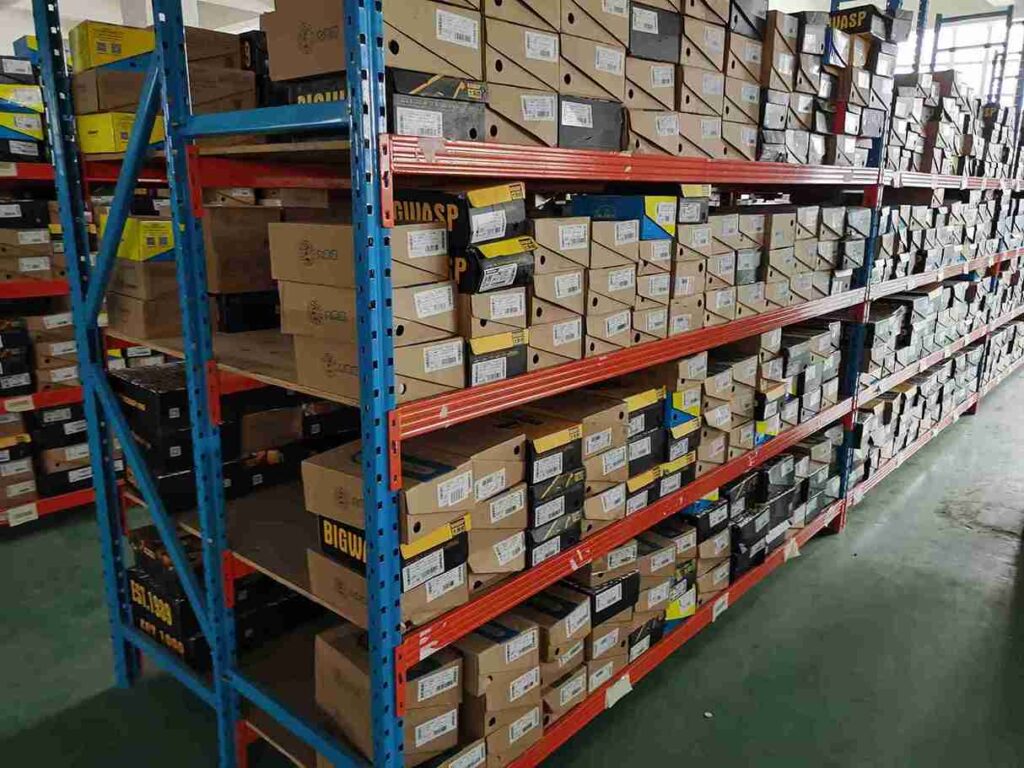
The Integration Blueprint: Engineering a Cohesive Automated Ecosystem with Box Beam Racking at its Core
Successfully integrating AGVs into a Box Beam Racking environment requires a meticulous, phased approach. It is a process of engineering a cohesive ecosystem, not just installing equipment.
Phase 1: Comprehensive Analysis and Digital Twin Creation
The process begins with a deep dive into the existing operation. Using advanced laser scanning technology, a millimeter-accurate 3D model of the warehouse is created. This digital twin becomes the foundation for all planning. SKU data, order profiles, and peak throughput demands are analyzed. Within this virtual environment, engineers can design the optimal Box Beam Racking layout, simulate AGV traffic flow, and identify potential bottlenecks long before installation begins. This phase ensures that the proposed Box Beam Racking configuration is perfectly tailored to the client’s specific operational data.
Phase 2: Configuring the Box Beam Racking for Peak AGV Performance
This is the critical design phase where the Box Beam Racking system is specified to serve the AGVs, not just store goods.
-
Aisle Width Calculation: Engineers perform detailed calculations to determine the narrowest possible aisle width based on the turning radius and mast design of the selected AGVs. This optimization, which can reduce aisle width by over 50%, is only viable with the precise and consistent structure of a Box Beam Racking system.
-
Dynamic Load Capacity and Beam Configuration: The Box Beam Racking is engineered not just for the static weight of the pallets, but for the dynamic forces exerted by the AGVs during lifting and placement. Beam levels are strategically placed to match the AGVs’ lift heights and the specific dimensions of the stored goods, ensuring smooth and efficient operations within the Box Beam Racking grid.
-
WMS/WES Integration: The exact layout of the Box Beam Racking—every aisle, level, and location—is encoded into the Warehouse Management System or a more advanced Warehouse Execution System. This creates a perfect digital-physical link, where the WMS can dispatch an AGV to a precise coordinate within the Box Beam Racking matrix.
Phase 3: AGV Fleet Management and System-Wide Orchestration
A fleet of AGVs operating within a Box Beam Racking environment requires sophisticated coordination.
-
Intelligent Task Dispatch: A central fleet management software acts as an air traffic controller, assigning tasks to AGVs based on priority, proximity to the required Box Beam Racking location, and battery levels.
-
Collision and Deadlock Prevention: Using a combination of onboard sensors and centralized control logic, the system ensures AGVs navigate intersections and narrow Box Beam Racking aisles safely and efficiently, preventing traffic jams.
-
Opportunity Charging: Automated charging stations are strategically placed, allowing AGVs to top up their batteries during short idle periods, enabling true 24/7 operation of the Box Beam Racking system.
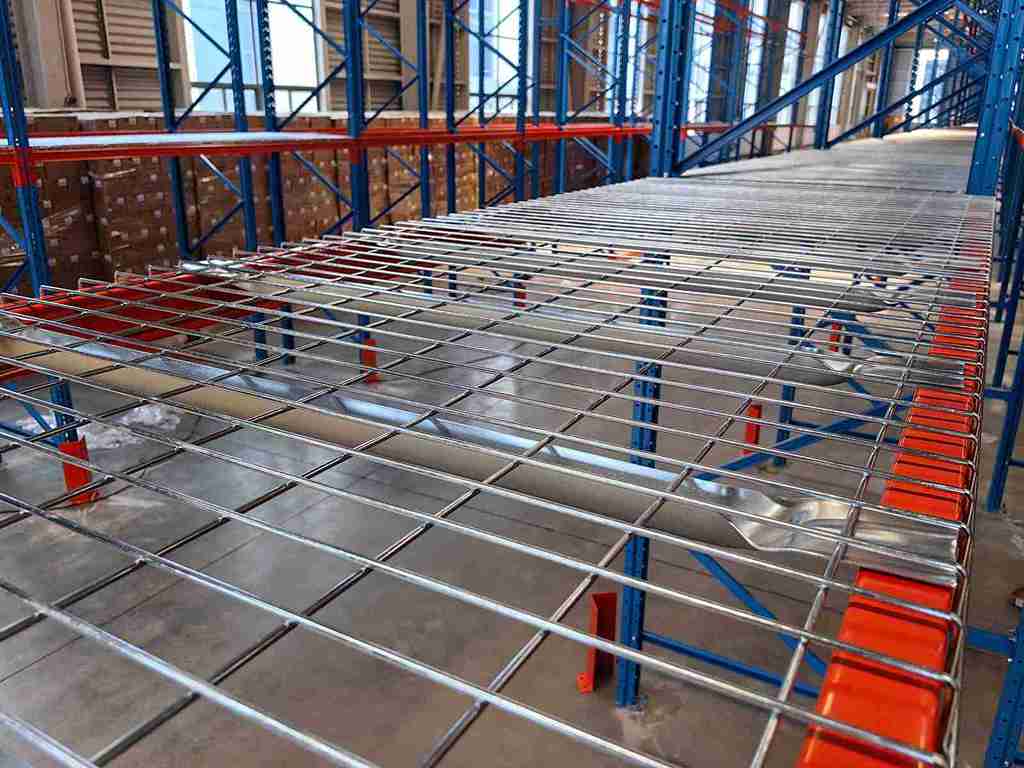
The Tangible ROI: How Integration Drives a 50%+ Surge in Productivity
The promise of a 50% or greater increase in productivity is a direct result of systematically eliminating the inefficiencies inherent in manual warehousing. The combination of Box Beam Racking and AGVs attacks these cost centers from multiple angles.
Dramatic Labor Cost Reduction and Strategic Reallocation
The most immediate financial impact is the significant reduction in labor costs associated with storage and retrieval. AGVs operating within the Box Beam Racking system do not require breaks, shifts, or salaries. More strategically, it allows companies to reallocate their human workforce to value-added tasks like system oversight, quality control, and exception handling, thereby elevating the entire operation’s capability.
Accelerated Throughput and Unprecedented Order Accuracy
AGVs move with consistent, optimized speed and can operate around the clock. When directed to a location within the Box Beam Racking system, they execute the task with 99.99% accuracy, especially when integrated with scanning systems that verify every transaction. This eliminates the costly errors of mis-picks and lost inventory, directly boosting customer satisfaction and reducing reverse logistics costs.
Radical Space Utilization and Capital Expenditure Deferral
By using the infinite adjustability of Box Beam Racking to maximize vertical space and leveraging AGVs to enable narrow aisles, facilities can often increase storage capacity by 30-50%. The investment in a high-density Box Beam Racking and AGV system is frequently far less than the cost of constructing or leasing additional warehouse space, delivering an immense return on investment.
Uninterrupted 24/7 Operation for a Non-Stop World
E-commerce and global supply chains demand continuous operation. An integrated Box Beam Racking and AGV system can function through the night under “lights-out” conditions. This allows for critical processes like inventory replenishment, order sorting, and cycle counting to occur without the overhead and complexity of a multi-shift labor model, providing a formidable competitive advantage.
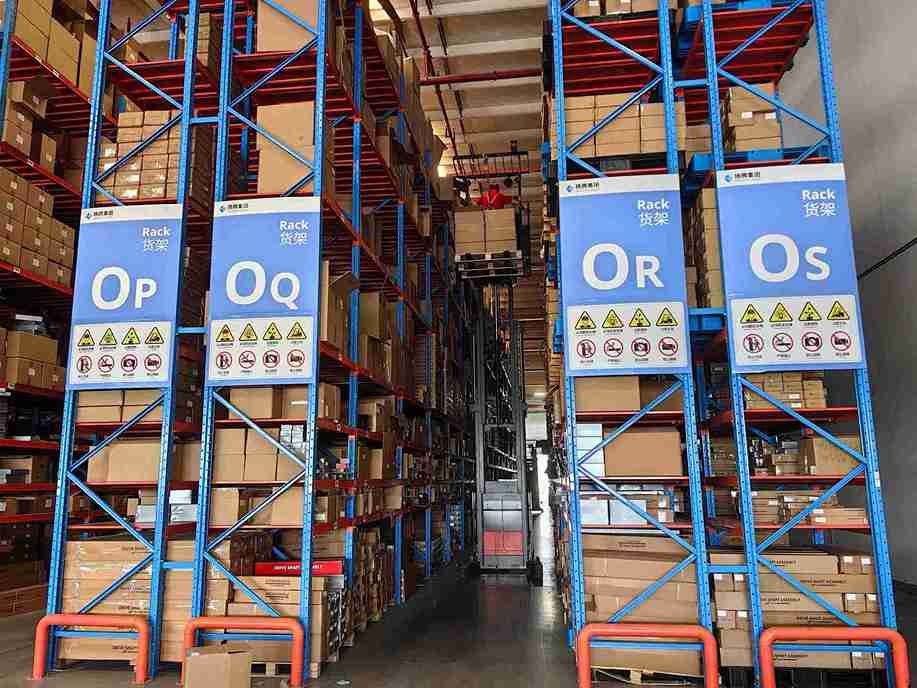
Case in Point: A Regional Distribution Center Transformed by Box Beam Racking and AGVs
A prominent consumer goods distributor in Southeast Asia faced a critical bottleneck. Their manual warehouse was bursting at the seams, order cycle times were escalating, and the cost of labor was becoming unsustainable. The conventional solution was to lease a second facility.
The Integrated Solution: The distributor partnered with automation specialists to design and implement a high-density storage solution centered on a robust Box Beam Racking system, configured for Very Narrow Aisles. This Box Beam Racking infrastructure was seamlessly integrated with a fleet of 15 LiDAR-guided reach truck AGVs.
The Quantifiable Results (12 Months Post-Implementation):
-
Storage Capacity: Increased by 45% within the existing building, entirely due to the high-density design of the Box Beam Racking and VNA capability.
-
Order Picking Throughput: Surged by 60%, driven by the speed and 24/7 operation of the AGVs within the optimized Box Beam Racking grid.
-
Labor Costs: Reduced by 55% in the storage and retrieval functions.
-
Inventory Accuracy: Achieved 99.98% due to the precision of the AGVs and the digital-physical link with the Box Beam Racking system.
-
ROI: The entire system, with the Box Beam Racking as its core, paid for itself in under 22 months, saving millions in avoided expansion costs.
Future-Proofing the Warehouse: Box Beam Racking as the Platform for Innovation
Investing in a Box Beam Racking system designed for AGV integration is not just a solution for today’s challenges; it is an investment in a scalable platform for future technologies.
-
IoT and Predictive Analytics: Sensors can be embedded within the Box Beam Racking structure to monitor health and load, while data from the AGV fleet can predict maintenance needs, moving operations from reactive to predictive.
-
AI-Powered Dynamic Slotting: The Warehouse Execution System can use artificial intelligence to continuously analyze order patterns and automatically suggest re-sloting within the Box Beam Racking system to minimize AGV travel time, a process far too complex for human management.
-
Inherent Scalability: The modular nature of Box Beam Racking means the storage system can be easily expanded or reconfigured. The flexible navigation of modern AGVs allows the fleet to be scaled up or re-tasked as business needs evolve, protecting the initial investment for the long term.
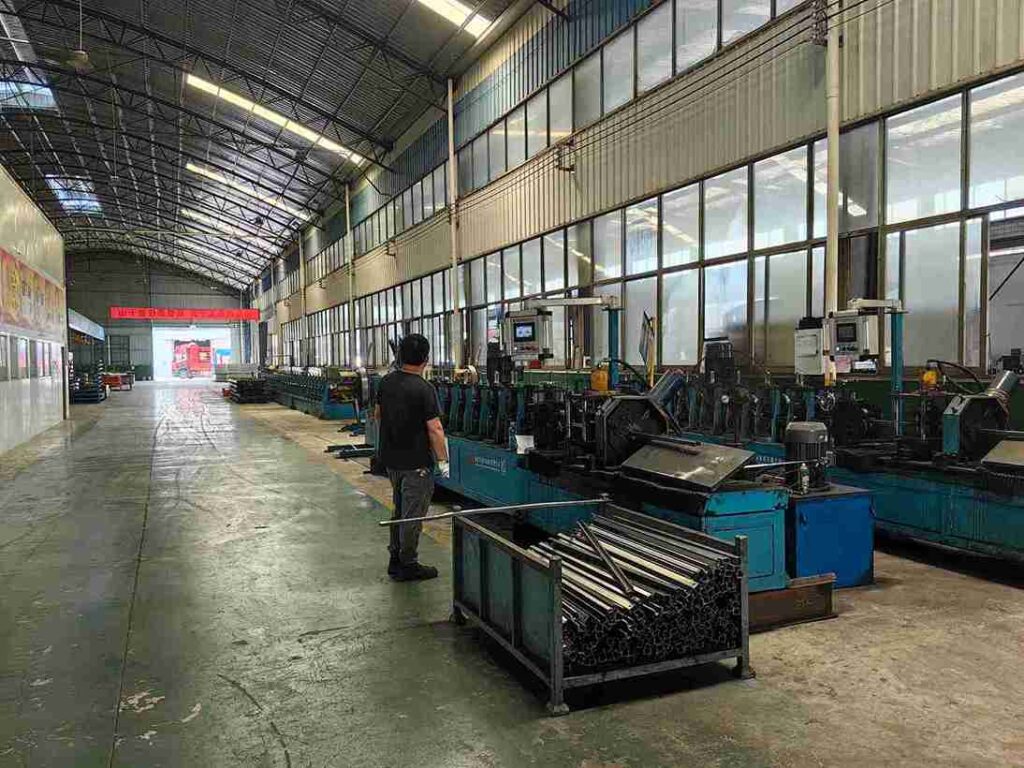
Conclusion: The Fusion of Structure and Intelligence is the New Standard
The evidence is clear and compelling. The strategic integration of Box Beam Racking with Automated Guided Vehicles represents the most significant leap forward in warehouse efficiency in a generation. This partnership moves beyond incremental improvement to deliver transformative results. The physical strength, flexibility, and density of a well-designed Box Beam Racking system provides the perfect physical grid for the relentless precision and intelligence of an AGV fleet.
For any operation serious about competing in the modern logistics landscape, the question is no longer if to automate, but how quickly to begin the journey of integrating Box Beam Racking with robotic material handling to build a faster, smarter, and more profitable warehouse.
Frequently Asked Questions (FAQs)
1. How does the seismic resilience of Box Beam Racking compare to other systems in automated warehouses?
Box Beam Racking systems are engineered to meet or exceed international seismic codes for their specific region. The bolted, moment-resistant connections between the box beams and uprights in a quality Box Beam Racking system provide excellent resistance to lateral forces. When designing an automated warehouse with AGVs, this structural integrity is paramount, as it ensures the stability of the entire storage grid that the robots interact with, safeguarding both inventory and high-value automation equipment.
2. Can an existing Box Beam Racking system be retrofitted for AGV integration, or does it require a completely new installation?
While a brand-new, perfectly specified Box Beam Racking system is ideal for optimal performance, many existing Box Beam Racking installations can be retrofitted. This process involves a thorough structural assessment to ensure the Box Beam Racking can handle dynamic AGV interactions, a potential re-leveling of the system for perfect alignment, and often the addition of guidance targets or reflectors for the AGVs. A detailed site survey is the first step in determining the feasibility of retrofitting an existing Box Beam Racking setup.
3. What are the fire safety considerations for a high-density Box Beam Racking system operated by AGVs?
High-density storage, including Box Beam Racking systems, requires a specialized fire protection strategy. This often involves in-rack sprinkler systems that are integrated directly into the Box Beam Racking structure to overcome the obstructions created by dense storage. Furthermore, the AGV fleet management software can be programmed with emergency protocols, such as directing all vehicles to a safe holding area in the event of a fire alarm activation, ensuring they do not obstruct emergency responders.
4. How is the performance of the overall Box Beam Racking and AGV system measured and monitored?
Performance is tracked through a comprehensive suite of Key Performance Indicators (KPIs) monitored by the WES/WMS. These include system throughput (picks/hour), AGV utilization rates, task cycle times (from dispatch to completion within the Box Beam Racking), battery health metrics, and order accuracy rates. This data provides a real-time and historical view of how efficiently the AGVs are operating within the Box Beam Racking environment, allowing for continuous optimization.
5. What is the typical operational lifespan of a Box Beam Racking system in a high-throughput automated environment, and how is it maintained?
A high-quality Box Beam Racking system, when properly specified for an automated environment, has an operational lifespan of 20+ years. Maintenance is primarily preventative and involves regular visual inspections for any signs of impact or damage, checking the tightness of safety locks, and ensuring uprights remain plumb. The durability of the Box Beam Racking is a key reason it is considered a long-term capital asset and the ideal foundation for an automation strategy.
If you require perfect CAD drawings and quotes for warehouse racking, please contact us. We can provide you with free warehouse racking planning and design services and quotes. Our email address is: jili@geelyracks.com

